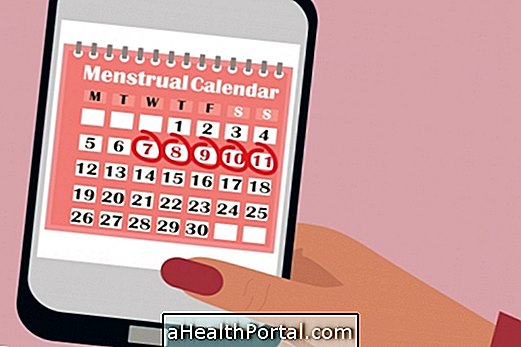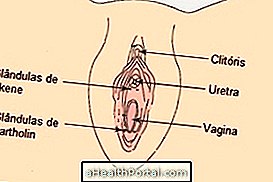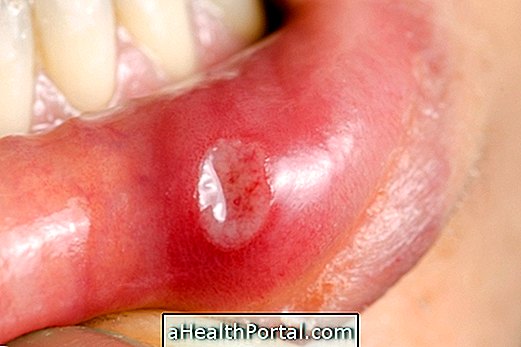The vaginal ring, or contraceptive, is a contraceptive method that prevents ovulation through the effect of the hormones contained therein. Thus, the woman does not produce eggs and therefore, even if the man ejaculates inside the vagina, the sperm does not have an egg to fertilize and generate a pregnancy.
This method consists of a ring of a flexible material that should be worn for 3 weeks in a row and which, when placed correctly inside the vagina, adapts to the contour of the body without causing any discomfort. Here's how to insert the vaginal ring.

1. Can I get pregnant using the ring?
The vaginal ring is a very reliable contraceptive method that prevents ovulation and therefore, when used correctly, has a chance of pregnancy less than 1%. In this way, it has an effectiveness almost as good as the condom, which is the most reliable method.
However, if the ring stays out of the vagina for more than 3 hours or if it is not replaced in the right way, it is possible for the woman to ovulate. That way, if you have unprotected sex in the 7 days before or after the possibility of getting pregnant.
2. Can I have unprotected intimate contact?
The protective effect against a possible pregnancy begins after 7 days of continuous use of the vaginal ring and therefore women who do not intend to become pregnant should only have unprotected sex after this period.
However, if the woman does not only have a sexual partner, it is always recommended to use the condom as well, since the ring does not protect against possible sexually transmitted diseases.
3. When should I remove the ring?
The ring should be used for 3 weeks and withdrawn on the first day of the 4th week to take a 1-week break to allow menses to go down. The new ring should only be placed after the last day of the 4th week, and up to 3 hours after the time it was originally placed.
4. What should I do if the ring comes out?
What to do when the ring leaves the vagina varies according to the time it was outside the vagina and the week of use of the ring. Thus, the general guidelines are:
Less than 3 hours
When the woman is sure that the ring is outside the vagina for less than 3 hours, you can wash it and put it back in the correct place regardless of the week of use. In these cases it is not necessary to use any other method of contraception.
More than 3 hours
- In the 1st to 2nd week: in these cases the ring can be replaced in the correct place after being washed, however, the woman must use another contraceptive method, like the condom, for 7 days, to avoid pregnancy. If the ring goes out during the first week and there has been an unprotected relationship in the previous 7 days, there is an increased risk that the woman may be pregnant.
- In the 3rd week: the woman can choose to put a new ring without pausing, using it again for 3 weeks in a row, or taking the 1 week break that should be done during the 4th week. This last option should only be chosen if there has been no unprotected relationship in the previous 7 days.
However, in case of doubt about leaving the ring, it is important to consult the gynecologist to know what is most advised for each case.

5. Who can not take the pill, can wear the ring?
Women who can not take the pill because of the presence of hormones should not use the ring because it also contains the same type of hormones as the pill.
However, if the problem is in the emergence of intense side effects with the use of contraceptive, the ring may be a solution, because it has a type of progesterone different from most pills, decreasing the risk of side effects such as swelling, increase of the weight, headache or breasts swelling.
6. Can I use the ring along with the pill?
Just like the contraceptive pill, the vaginal ring uses hormones to prevent ovulation and prevent unwanted pregnancy. Therefore, a woman who uses the ring should not also take the pill, as it will increase the concentration of hormones in the body, which can lead to more side effects.
7. Use the vaginal ring fattening?
Like any other hormone remedy, the ring can cause changes that lead to increased appetite and fluid retention throughout the body, favoring weight gain. However, the risk of this type of effects is usually lower in the ring, and may be used as a substitute in women who have noticed weight gain with the pill, but who need to continue to use hormones.
8. Can the ring cause bleeding out of the period?
Due to the use of hormones, the ring carries the risk of causing bleeding outside the menstrual period, however, it is a change that does not pose any risk to a woman's health.
However, if bleeding becomes more frequent or more frequent, it is recommended to inform the gynecologist to evaluate the need to change contraceptive method, for example.
9. Is the vaginal ring offered by SUS?
The contraceptive ring is not one of the contraceptive methods offered by the SUS and, therefore, must be bought in conventional pharmacies with a price that can vary between 40 and 70 reais.
The methods offered by the SUS are the male condom and some types of contraceptive pill.



















